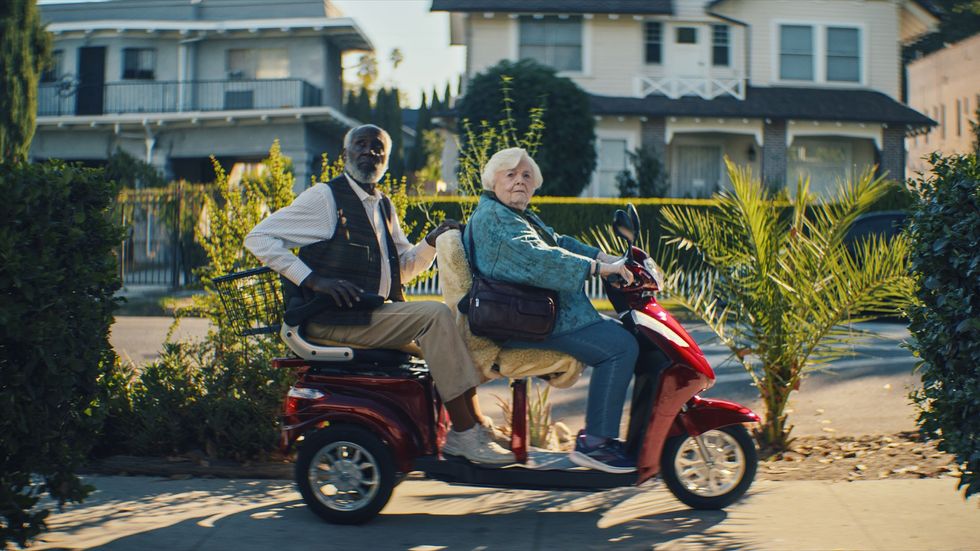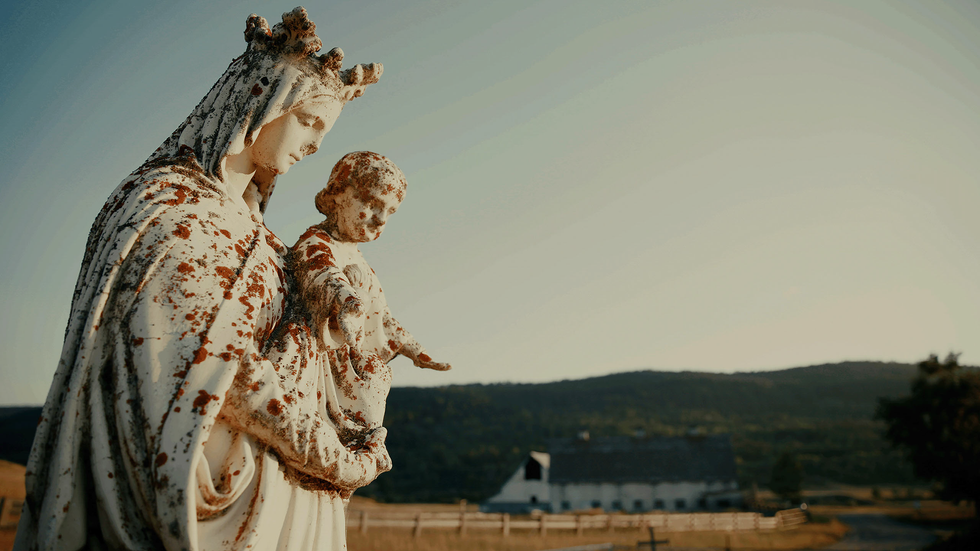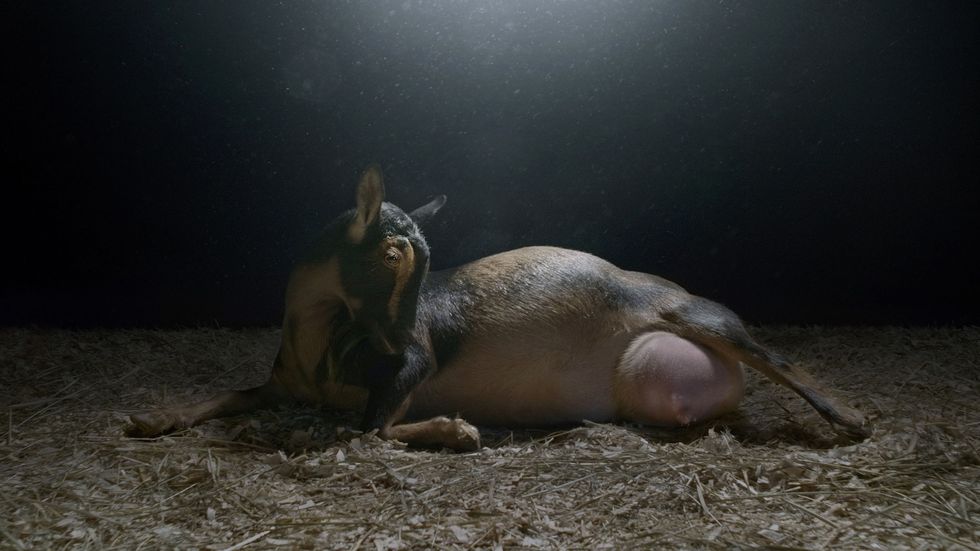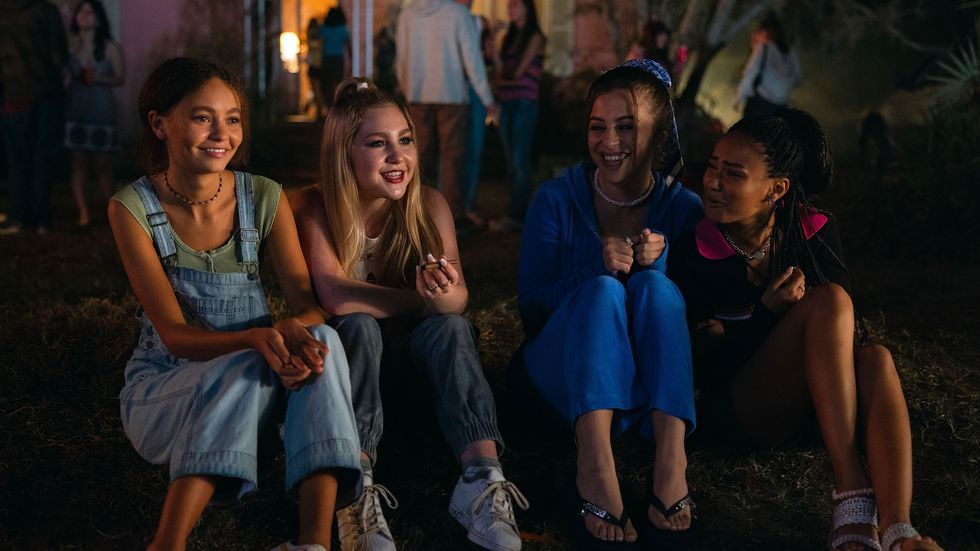
How do you get the money shot, the big reveal, the twist that your documentary needs? How do you grapple with people telling you “no”? What happens if the ending of your short film just doesn’t work, and you have to rewrite it on the spot? How do you integrate new visuals and technology to better reflect your subject matter?
What about if you get—gulp—arrested while making your film?
Believe it or not, we’ve got all these production trials and tribulations in the stories below, straight from Sundance filmmakers themselves. Making indie films is hard—running and gunning can be a nightmare sometimes. But as you’ll see, it can all be beautiful, and worth it, in the end.
Below, you’ll find filmmakers’ answers to the question, “What were some specific production challenges that were unique to your project?” Enjoy!
 Thelma Courtesy of Sundance Institute
Thelma Courtesy of Sundance Institute
Josh Margolin, writer/director/editor, Thelma
Our leads were in their 80s and 90s, which required care and consideration when scheduling and choreographing our days. We had to be in close communication with our actors to make sure everyone was comfortable with what was asked of them. June Squibb was driving a mobility scooter through LA, rolling across beds, traversing unpaved lots in the middle of the night… but she did an incredible job. She actually ended up doing a lot of her own stunts with the support of our awesome stunt team. Her powers truly know no bounds.
Christopher Jenkins, director/writer, 10 Lives
Let’s face it: animation is a crazy way to make a movie, and yet audiences flock enthusiastically back time and again, often resulting in mega box-office hits. If that wasn’t so, animation would have died off long ago because the common element in all animation production is the high cost it takes to make. Of course, this can be true in live-action containing special effects, and yet for animation, since everything has to be created from the ground up, every facet of production involves many artists.
Imagine you’ve been asked to shoot a low-cost scene with two actors, let’s say on a ski slope. Now, what for you might be a drive to some snowy place and a shoot involving relatively few people (particularly if it’s indie) is for animation a costly proposition. Rarely can anything be cheaply created in animation. For us, the snowy environment will have to be conceived of and built in a computer—the snow will need some kind of simulation for footsteps—if it’s snowing, an effects department will need to specify, build, and animate the snow. And let’s not forget your actors—while at the very least you will point, shoot, and record sound from these two humans, animation starts with a 2D design phase after which a modeler will have to build the characters in the computer.
Next, a team of riggers will build the terribly complex wire frame that will control the actions and emotions of the character, and with these tools, an animator will create the action. After approvals with the director, the animation goes to lighting with all the other elements, and a team of artists will combine everything, adding in the light effects and creating the final look. There are many other elements and staff necessary, but the above gives a general overview. Basically, it’s a lot.
In a big studio where costs are still a concern, and despite many and varied ways of bean-counting, little is controlled on a fundamental level and budgets remain huge. For 10 Lives, the challenge was to take a budget 4 times lower than the big guys but create something that could compete with them. The initial task for me as writer was to write small but with big themes. This doesn’t mean abandoning the many factors that go into a successful animated movie. It’s no good designing a movie that no one wants to see. But erupting volcanoes and flying dragons had to be put aside in favor of a story that went inside the characters’ heads rather than out into vast environments. This might sound obvious, but it’s very common to find animated movies in trouble because they’ve bitten off more than they can chew.
Carla Gutiérrez, director/editor, FRIDA
Collecting all of Frida Kahlo’s writings (dispersed all over the world) and organizing all the archives was a great task that my production team, led by the incomparable producer Katia Maguire, managed beautifully.
J.M. Harper, director, As We Speak
In the documentary, we follow Kemba through the varied regions of hip-hop (The Bronx, Atlanta, New Orleans, Houston, Los Angeles, Chicago, London) as he investigates the reality of rap lyrics and the criminal justice system. Each city presented its own production challenges—both finding the right rap artist voices to speak to their own realities and then telling that story in a progressive way, rather than filling the documentary with talking heads.
For example, in Chicago, we spoke to some of the original drill rappers who laid the foundational building blocks of the genre. Instead of just talking about the hard realities that popularized the genre on the street (and airwaves), we explored it through the lens of history. One of the scenes involves a few rappers adapting a violent scene from Romeo and Juliet—showing how the vendetta violence that Shakespeare dramatized in the 1500s (based on sectarian feuds and a lack of trust in the established justice system), hews remarkably close to what people have experienced in Chicago.
So, the challenge was to talk about social issues in a way that felt inventive and artful, just like rap lyrics do. The fact that prosecutors then take those lyrics as evidence and label them as “autobiography” in order to incarcerate rap artists, feels especially transgressive.
 Sugarcane Courtesy of Sundance Institute
Sugarcane Courtesy of Sundance Institute
Emily Kassie, director/producer, and Julian Brave NoiseCat, director, Sugarcane
When we found out one of our participants, Chief Rick Gilbert, would be part of a delegation to visit the Vatican and meet Pope Francis for a historic discussion about Indian Residential Schools, we knew access would be near impossible.
Rick was a residential school survivor and a devout Catholic whose journey we knew could culminate in this profound moment. We tried to get permission to join various activities, church visits and the official apology meeting through the Catholic tour group organizing the trip, the Canadian Catholic Bishops, a local production company and the official Vatican press office, all to no avail.
So, we had to get creative. We can’t share the whole story yet, just that it was a wild, tricksterly adventure with Rick through Rome and the Vatican into the room where the Pope apologized to residential school survivors, like Rick, who we intimately witnessed grappling with the simultaneously meaningful and empty gesture from the leader of his faith.
Sterling Hampton IV, director/producer/composer, Merman
Well we filmed the whole project in seven hours in Palm Springs. I sort of strategically only gave us a day of time to film in effort to strike up as much spontaneity as possible during the shoot.
Dimitri Simakis, writer/director/editor, The Rainbow Bridge
Making a fake dog seem not only believable but lovable, asking my DP to make sure the other 11-foot dog puppet can be lit properly, more in that vein, but those stand out
Graham Mason, producer/editor, Good One
The movie is set on a hike in Catskills, so a lot of the movie was shot outdoors, which presented a host of logistical problems, including: ticks, bears, wildfire smoke, heat, rain, and most notably, mud. The mud situation was unreal. We rented a four-wheeler to carry our gear into the woods, but the mud rendered several locations inaccessible by vehicle, and we were forced to carry equipment and supplies on foot. I had never before realized how mentally taxing it is to stand in mud all day. Mud sucks.
Lana Wilson, director/producer, Look into My Eyes
We started filming this during the pandemic, and psychic sessions—which involve two people sitting indoors, close together—must be one of the worst possible situations to try to film with COVID restrictions. Filming with masks didn’t work because you couldn’t see people’s faces, filming outside usually didn’t work because of how noisy it can get in New York City, we even tried using Plexiglas at the beginning when that seemed like an effective way to avoid getting COVID, but that was a disaster.
One time we set up a gorgeous filming situation in a remote park on the Upper East Side that we had visited many times, and which was always empty, but on the day that we were filming, a child’s birthday party was literally set up in the background of our main shot. Ultimately, we were able to get to a point where testing and then vaccines were available, and we could film the sessions as they deserved to be filmed.
 Realm of Satan Courtesy of Sundance Institute
Realm of Satan Courtesy of Sundance Institute
Scott Cummings, director, Realm of Satan
Well, without saying too much, the film contains a very staged animal birth.
To achieve this, my cinematographer Gerald Kerkletz and I traveled to a farm in Maine with a gaffer, Cristian Delvalle Cacaido, and basically lived in a pen in the barn with a pregnant animal for five days, sleeping in shifts and waiting for this animal to give birth. We didn’t dare leave because it felt like it could happen at any second. Yet… five days.
Have you slept in a barn for five days with live animals? We have tens of hours of footage of when we thought the animal seemed ready, only for the animal to inevitably go to the bathroom. In some of the footage, you can hear us loudly snoring. While it was hard, it’s a memory I will really cherish from this. Also, we met a lovely family out there.
Beyond that, well, the film was shot all over the place, sometimes with people I’d only spoken to on the phone. So, logistically, it was difficult. We worked in two different modes—one mode was Gerald, myself, and our main gaffer/grip/right-hand-secret weapon Francisco Acosta. We were a team of three and we did most of the shoot together. I don’t really shoot sync sound, I prefer to recreate everything in post, so that makes it easier.
Besides that, we had several VERY big shoot days that involved steadicam and VFX. For those days we would scale up to a crew size of over 20. But through this model, we were able to shoot a huge amount.
Bettina Dalton, producer, Every Little Thing
The sheer (tiny) size of the birds and the speed with which they move required me to seek out the most experienced Hummingbird DOP I could find. It was Ann Prum—I had watched all her hummingbird natural history films, and I knew no one could have had more experience in this than her. She delivered the most incredible footage!
Michael John Warren, director/producer, Lolla: The Story of Lollapalooza
We filmed Lolla’s triumphant return in 2021 as large-scale events attempted to claw their way back after COVID. I know that making documentaries often comes with inherent physical risks. However, I take the safety of my crew and myself very seriously. So, when we were suddenly in a crowd of tens of thousands as Marshmello worked everyone into a throbbing frenzy, I was concerned about our exposure to the virus.
Yes, Lolla and The City of Chicago innovated and enforced protocols, but this was literally the largest gathering of humans on American soil since the pandemic began. And yes, we were outside, but my paranoid mind was like, “Is there really fresh air when thousands of people are standing shoulder to shoulder, screaming for joy and grinding?” I’d later learn that aerial coverage of that set and its massive crowd were making national headlines, declaring it a “super spreader.” It wasn’t.
I remember reports from the week after saying that Lolla ’21 was statistically one of the safest places in Chicago that weekend. I didn’t know that at the time. After grabbing a few shots of the bulging masses, I got my crew out of there and wrapped the day. I’m sure some of my crew jumped back into the crowd and enjoyed the music. I, however, found a nearby open space and took some deep breaths.
Astrid Rondero and Fernanda Valadez, directors, SUJO
Sujo has definitely been our most challenging film. There were many locations, many actors, very young children, a lengthy script. But probably the most challenging part was coming to terms that our beloved Guanajuato, a state that has always supported our films in the most generous way, has become dangerous.
We had an encounter with armed men that fortunately didn’t have serious consequences, but the innocence and freedom with which we used to move in the rural Guanajuato is now gone.
 Suncoast Courtesy of Sundance Institute
Suncoast Courtesy of Sundance Institute
Bruce Cole, DP, Suncoast
One of our biggest challenges was shooting with minors under COVID restrictions. When we began production, we were still practicing the COVID guidelines put in place, so this meant that we would be conscious about the speed and crew spacing of the set, which ultimately lead to shorter shooting times.
This, along with the majority of our cast being minors, led to a shorter shooting schedule day to day. We increased the overall schedule by a few days to compensate for this, but it still remained very challenging.

No Film School’s coverage of Sundance 2024 is brought to you by Canon.
Author: Jo Light
This article comes from No Film School and can be read on the original site.
